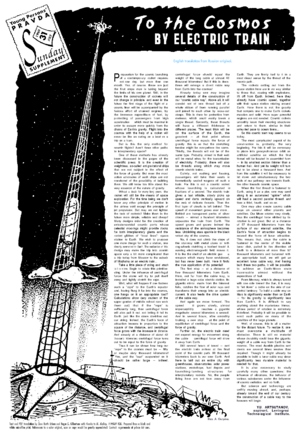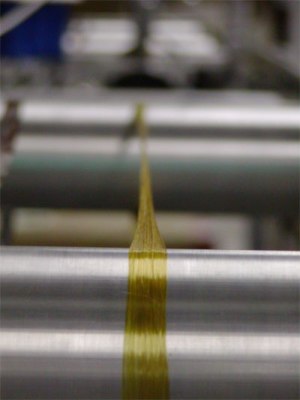When
| Title: How Close? | ||
|
[Cover Img] |
About:
|
Tags:
|
Abstract
This article answer a very frequently answered question - "when will the space elevator be built?". Prediction being what they are, we're not circling dates on a calendar - rather, we identify the major steps that have to be taken, estimate how long they will take, and track the current state of the art in relation to them. Spoiler: The short answer, btw, is that we think we can start building the first elevator by 2020, and have it operational by 2025. That's in 15 years.
This article follows closely the information in http://www.spaceward.org/elevator-howClose.
Are we there yet?

Technically speaking, the Space Elevator requires two major achievements: a tether which is at least 30 GPa-cc/g strong (see below), and a long-range power beaming system in the Mega-Watt range. We define phase 0 as demonstrating these two technological building blocks, and we plan to do this by the year 2010, including a 10 GPa-cc/g CNT tether, and a multi-kWatt km-scale power beaming demonstration.
With these benchmarks demonstrated, we plan to pursue a 5-year development phase (phase 1) of full-performance components, followed by a 5-year system development effort (phase 2). This puts the beginning of construction (phase 3) around the year 2020.
The cost of phase 0 is well under 5 million dollars, and some of it is being achieved by the Elevator:2010 challenge project for significantly less than that. Based on current results and publications, we believe the objectives are very much achievable. (The results of phase 0, btw, are very much commercially viable, and we plan to use them to fund phase 1)
Phase 1 is the highest-risk portion of the development plan, since it aims to achieve the largest advance in performance. We estimate the cost of this researcg phase at under 200 million dollars, and it will result in removing any doubt about the feasibility of the SE project - by far the most important milestone in the plan.
Phase 2 is the main design phase - 5 years to design every nut and bolt on the anchor station, the climbers, the deployment systems... This is an aerospace design phase not much different than designing a new type of airplane or space capsule. The cost of this phase is much higher, and it will be performed by subcontracting to major aerospace companies.
Phase 3 is a direct continuation of phase 2, including the building of the ground infrastructure, the full length ribbon, the power beaming station...
All in all, we estimate the entire program to cost less the $10B - a small amount compared to the development and construction costs of programs like the Space Shuttle, the ISS, or even "regular" rockets.
The tether

By far, the tallest hurdle we have to clear on the way to building the Space Elevator is the development of a suitable tether material. The main metric we are concerned about is the strength-to-weight ratio of the material, also known as its specific strength, or tenacity. Steel wire, for example, can be made very strong, but it is also very heavy, so is not a good candidate. Spectra 2000 fiber, in comparison, is a little bit stronger, but what's more important, is about 8 times lighter, making it a much more suitable material, though not quite good enough.
In the chart below, we track the state of the art in advanced materials. The diagonal line is a "reference curve" that depicts a 50% yearly improvement in the specific strength of materials, starting off at what is available today (2005). This reference curve is not a prediction - it is simply something to compare with. As far as material properties go, this is an extremely fast growth curve. Since Carbon Nanotubes are a new class of materials, we do not expect real-life results to follow this smooth gradual curve, but rather advance in larger steps. With a theoretical limit of about 200 GPa-cc/g, the potential of CNTs exceeds our goal, and just like early metals or plastics, the initial improvement in material properties will be very fast.
In the next few years, we will have a more complete picture of whether CNT materials were able to advance at a 50% yearly rate, and whether we encounter fundamental roadblocks that will prevent further advances.
In addition to the reference curve, we plot the following types of data points:
- In Blue, we show numbers measured at the Elevator:2010 competition.
- In Red, we show spec-sheet data for commercial off-the-shelf products.
- In Purple, we show published measurements and analysis results.
- In Green, we show Space Elevator goals.
New!!! Two recent data points, #10 and #11!